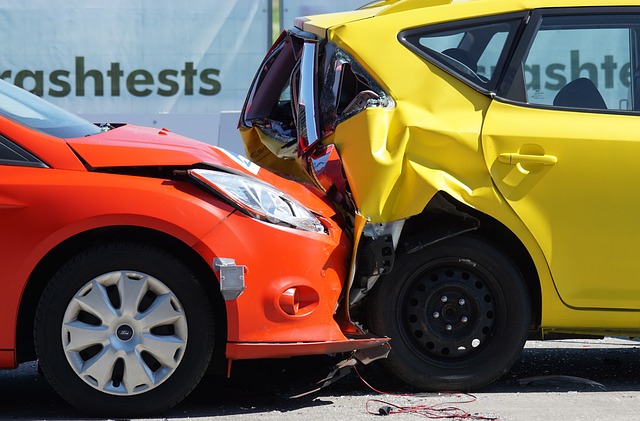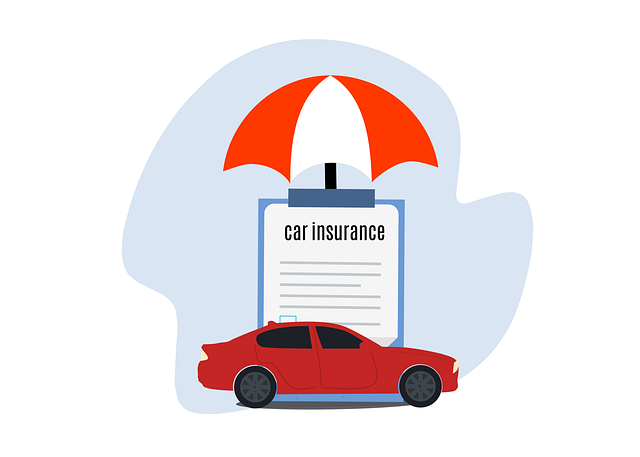Collision vs. comprehensive auto insurance are two distinct coverages that shape driving protection. Collision insurance protects against vehicle repair/replacement costs after a crash, while comprehensive insurance offers broader coverage for theft, vandalism, natural disasters, and animal-related damages. Comprehensive policies are more expensive but provide peace of mind by filling gaps left by collision insurance's specific criteria. Understanding these options helps drivers make informed decisions, balancing protection needs with budget constraints.
Looking for clear guidance on car insurance? This comprehensive guide breaks down essential aspects of auto coverage, focusing on the vital distinction between collision and comprehensive policies. We explore scenarios where comprehensive insurance becomes indispensable, uncover common exclusions, and analyze factors influencing rates. Additionally, we provide a step-by-step claims navigation process, empowering you to make informed decisions regarding your vehicle’s protection in the face of unforeseen events. Understand the nuances of collision vs. comprehensive auto insurance today.
Understanding Car Insurance Policies: A Beginner's Guide

Car insurance policies can seem complex, but understanding the basics is essential for making informed decisions. Two key types to grasp are collision and comprehensive coverages. Collision insurance is designed to protect you financially in case your vehicle collides with another car or fixed object. It covers repairs or replacement costs, but only when an incident occurs due to a crash. On the other hand, comprehensive auto insurance offers broader protection, covering not just collisions but also theft, vandalism, natural disasters (like floods or storms), and even damage from animals like deer or dogs.
Comprehensive coverage is often seen as more thorough, providing peace of mind in various unexpected situations. While collision insurance is typically cheaper, it leaves gaps in protection unless the specific circumstances are met. Comprehensive policies, though slightly pricier, ensure you’re covered for a wider range of events. Comparing these options and understanding their nuances allows drivers to tailor their coverage to suit their needs and budget.
Collision vs. Comprehensive: Unraveling the Difference

When it comes to auto insurance, understanding the distinctions between different types of coverage is crucial for making informed decisions. Two common options that often confuse drivers are collision and comprehensive insurance. While both protect your vehicle in different ways, they serve distinct purposes.
Collision insurance covers repairs or replacements when your car collides with another vehicle or a fixed object. It includes costs like repair bills, towing, and even rental cars while your vehicle is being fixed. On the other hand, comprehensive insurance protects against non-collision events such as theft, natural disasters (like floods or storms), vandalism, and animal strikes. It goes beyond collision coverage by addressing a wider range of unforeseen incidents that could impact your vehicle’s condition and value.
When Is Comprehensive Coverage Necessary?

Comprehensive coverage is a crucial consideration for drivers who want complete protection against potential vehicle damage, beyond what collision insurance offers. While collision insurance specifically covers damages resulting from accidents involving other vehicles or objects, comprehensive insurance steps in to protect you in a wider range of scenarios. This includes damage caused by natural disasters like storms, floods, or fire, as well as issues like theft, vandalism, and even accidental damage to your car, such as driving over a pothole that damages your tire.
In contrast to collision insurance, which typically focuses on high-impact incidents, comprehensive coverage acts as an all-encompassing shield for various risks. It’s particularly necessary if you live in areas prone to extreme weather conditions or have experienced previous incidents of theft or vandalism. Additionally, if you drive less than 7,500 miles annually or store your vehicle outdoors without a garage, comprehensive insurance can be beneficial, as these factors increase the risk of damage not covered by collision-only policies.
Common Exclusions and Considerations in Comprehensive Insurance

Collision versus comprehensive auto insurance is a key consideration when selecting your coverage. While collision insurance covers damage from accidents, it typically excludes other incidents like theft or vandalism. Comprehensive insurance, on the other hand, provides broader protection against various risks including natural disasters, animal-related damages, and even falling objects.
However, both types of insurance have their exclusions. Comprehensive policies usually don’t cover wear and tear, intentional damage, or losses incurred while driving under the influence. Additionally, certain high-risk areas or vehicles may face stricter limitations. Understanding these exclusions is crucial when deciding between collision and comprehensive insurance to ensure you’re adequately protected based on your specific needs and circumstances.
Factors Affecting Comprehensive Car Insurance Rates

Several factors influence comprehensive car insurance rates, with collision and comprehensive auto insurance being two key types considered by insurers. While collision insurance covers damage from accidents, comprehensive insurance protects against a wider range of events like theft, vandalism, and natural disasters. The cost of each varies greatly based on these considerations.
Age and driving history play a significant role; younger drivers or those with a history of accidents or violations tend to face higher premiums. Vehicle make and model also matter; luxury cars or those deemed high-risk for theft may incur higher rates. Location is crucial, as areas with higher crime rates or frequent natural disasters reflect in insurance costs. Additionally, deductibles chosen by the policyholder can significantly impact the overall price, with lower deductibles leading to slightly higher premiums.
Navigating Claims: A Step-by-Step Process for Comprehensive Coverage

When it comes to car insurance, understanding the claims process is crucial, especially with comprehensive coverage. Navigating a claim for comprehensive insurance involves several steps, offering peace of mind knowing your vehicle is protected against non-collision events like theft or natural disasters.
The first step is to notify your insurance provider as soon as possible after the incident. Provide them with all relevant details and take photos of the damage. Your insurer will then assign an adjuster who will inspect the vehicle, assess the damage, and determine the cost of repairs. If the repair costs exceed the deductible, your comprehensive coverage will kick in, ensuring a smoother process compared to collision insurance, which primarily covers accidents involving another vehicle or object.
